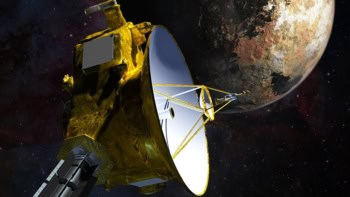
It may not be quite the finding they were hoping for, but researchers at the XENON collaboration say that they have placed the most stringent limits yet on the properties of dark matter. The hotly anticipated results suggest that a discovery of an elusive dark-matter particle – if indeed it does exist – will stretch existing detectors to their limits.
Although dark matter is thought to make up more than 80% of all mass in the universe, it is invisible, so it has only been inferred from its gravitational effects. The most popular candidates for its make up are called weakly interacting massive particles, or “WIMPs”, which are hypothetical particles that could be heavier than atomic nuclei.
The XENON 100 experiment is looking for WIMPs using an incredibly sensitive detector hidden beneath the Gran Sasso mountain in central Italy. Its location was chosen to shield the experiment from cosmic radiation that is constantly bombarding the Earth. The detector itself consists of 62 kg of liquid xenon contained within a well-shielded tank, where a WIMP entering the detector should interact with the xenon nuclei to generate light and electric signals.
Three events found
Yesterday, the XENON collaboration released the results from 100.9 days of searching for WIMPs between January and June 2010. While the researchers have found three candidate events, two of these were expected to appear anyway because of background noise. They therefore admit that they have found no new evidence for the existence of WIMPs.
Detailing their findings in a paper submitted to the arXiv preprint server yesterday, the XENON collaboration say that the null result does, however, place the most stringent limits to date on the nature of WIMPs. In a statement released yesterday, the collaboration declared: “These new results reveal the highest sensitivity reported as yet by any dark-matter experiment, while placing the strongest constraints on new physics models for particles of dark matter.”
Alex Murphy, who works on ZEPLIN III, another liquid-xenon dark-matter detector based in the UK, says that he is “not surprised” by the new result, and he is still confident that a clear dark-matter signal could be just round the corner. He is concerned, however, that the data and other recent findings suggest that the nature of background cosmic noise could be more complicated than previously thought. “Until recently, dark-matter researchers were worried about gamma rays and neutrons interacting with xenon in simple ways, but we are starting to see more complicated interactions including gamma rays scattering several times to give unusual signals,” he says.
The findings also cast further doubt on findings from the end of 2009 by the CDMS II dark-matter collaboration in the US, which claimed to have spotted two dark-matter candidates. This experiment, located in a disused mine in Soudan, Minnesota, searches for WIMP signals using 30 detectors made of germanium and silicon cooled to temperatures close to absolute zero.



